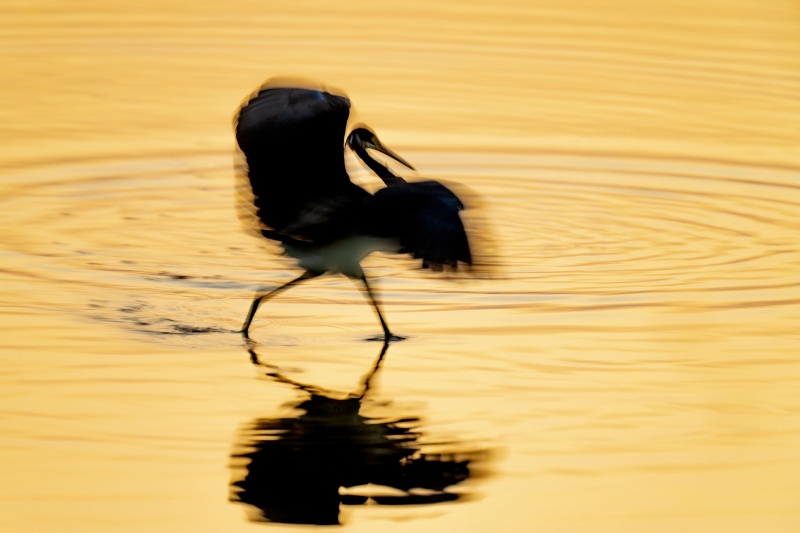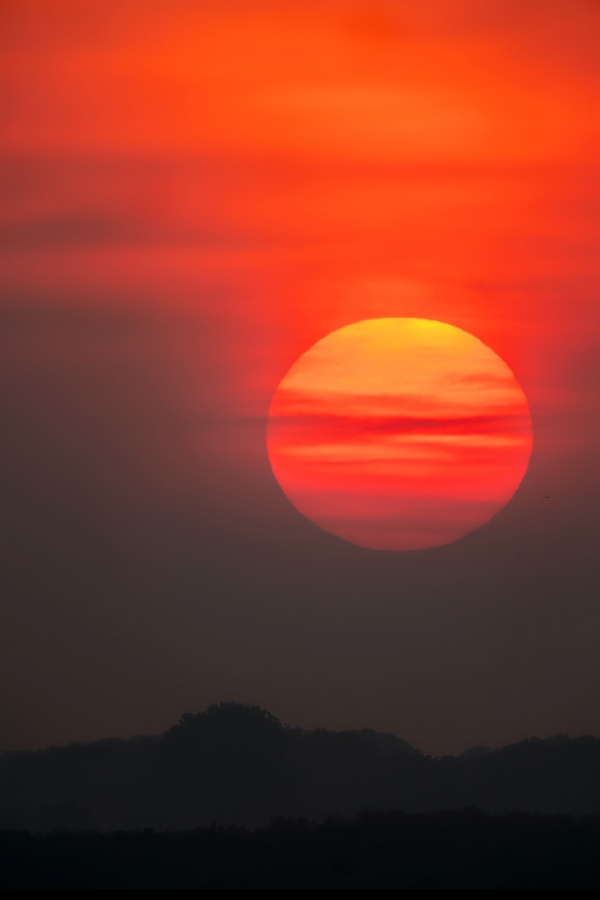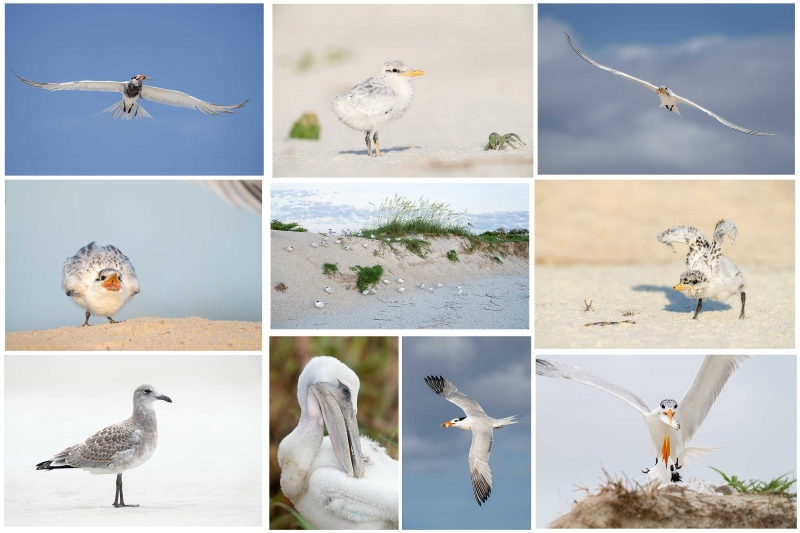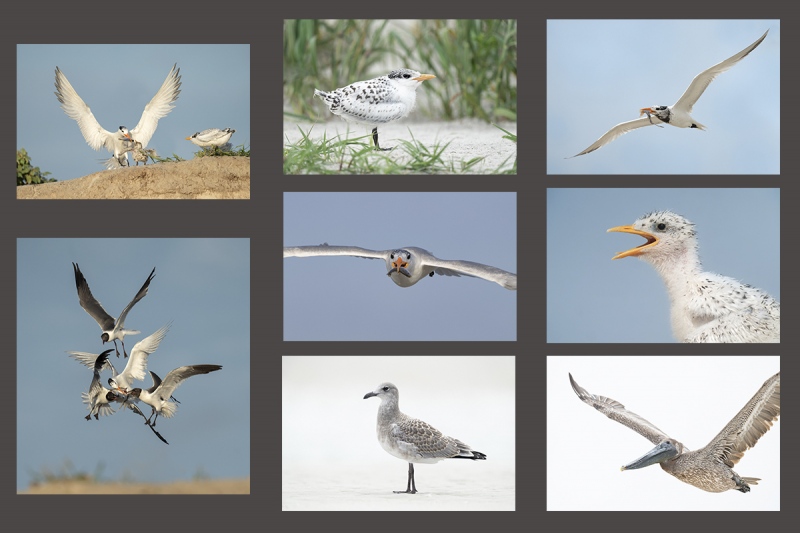Your Favorite?
Which of today’s two featured images do you like best? Why?
July 4th Weekend in Central Florida
If you live or will be in South or Central Florida (or anywhere near Duval county) on the long July 4th weekend and would like to explore the possibility of doing some amazing photography with me on a shared-cost basis, please get in touch with me immediately via e-mail.
What’s Up?
After my sunrise trip to Coleman Landing — see below, I headed down to the lake. I made some decent images of the usual cast of characters: Sandhill Crane, Mottled Duck, Osprey, Limpkin, Great Egret, Snowy Egret, and Little Blue Heron.
Today is Saturday 25 June 2022. The forecast for ILE this morning is calling for partly cloudy with an almost imperceptible breeze from the northwest. Wherever you are and whatever you are doing, I hope that you too have a great day. This blog post took more than an hour to prepare and makes ninety-nine days in a row with a new one.
Please remember to use the B&H and Amazon links that are found on most blog pages and to use the BIRDSASART discount code at checkout when purchasing your new gear from Bedfords to get 3% back on your credit card and enjoy free second-day air FedEx. Please, also, consider joining a BAA IPT. You will be amazed at how much you will learn!
BIRDS AS ART Image Optimization Service (BAA IOS)
Send a PayPal for $62.00 to birdsasart@verizon.net or call Jim at 863-692-0906 and put $62.00 on your credit card. Pick one of your best images and upload the raw file using a large file sending service like Hightail or DropBox and then send me the link via e-mail. I will download and save your raw file, evaluate the exposure and sharpness, and optimize the image as if it were my own after converting the raw file in Adobe Camera Raw. Best of all, I will make a screen recording of the entire process and send you a link to the video to download, save and study.
Induro GIT 304L Price Drop
Amazingly, we have two, brand-new-in-the-box Induro GIT 304L tripods in stock. They are $699.00 each (were $799.00) and the price now includes the insured ground shipping to the lower 48 states. Weekday phone orders only: 863-692-0906.
|
|
|
This image was created on 24 June 2022 Coleman Landing at Shady Oaks on the south shore of Lake Kissimmee. I used the Induro GIT-304L/Levered-clamp FlexShooter Pro-mounted Sony FE 600mm f/4 GM OSS lens with the Sony FE 1.4x Teleconverter and The One, the Sony Alpha 1 Mirrorless digital camera. ISO 2000. Exposure determined via Zebras with ISO on the rear dial: 1/15 sec. at f/5.6 (wide open) in Manual mode. AWB at 6:13:25am while facing east. Tracking: Zone/Bird-Face-Eye Detection AF-C was active at the moment of exposure and performed well. Click on the image to see a high-res version. Image #1: Tricolored Heron fishing |
Fun in the Dark
I was up very early (as usual) on Saturday morning. The forecast was calling for clear skies with a W/SW wind. At 5:45am, I headed to Coleman Landing because if offers a clear view of the north eastern sky and the sun rising over the lake. Heading east on SR 60, I was pleased to see some haze above the horizon. First, I created some creek/sky scenics with the tripod-mounted 70-200mm f/2.8 II lens. The best of those was less than inspiring. I moved 75 yards to my left, leveled the /Levered-clamp FlexShooter Pro and set up for blurs. There was a Great Blue Heron fishing in the marsh but there were no silhouette opportunities as the bird was buried deep in the grasses. I was hoping to have some large wading bird flocks fly by in the pre-dawn color so that I could create some pleasing blurs. Nada on that. There was a small pool of clear water at the bottom of the boat ramp. By luck, a Tricolored Heron flew in and began fishing in the pool. I stayed at 1/15 second, raised the ISO until I had some Zebras on the water, and fired whenever the bird danced in the clear water.
You know that it is dark when you are shooting at 1/15 second at ISO 2000!
The water was white in the raw file. My plan was to process it by juicing up the color and then rendering the bird totally black. Experimenting, I moved the Highlight Slider to the right and liked the resulting funky look with just a bit of revealing light on the bird’s face and belly.
|
|
|
This image was also created on 24 June 2022 Coleman Landing at Shady Oaks on the south shore of Lake Kissimmee. I used the Induro GIT-204L/Levered-clamp FlexShooter Pro-mounted BLUBB-supported Sony FE 600mm f/4 GM OSS lens, the Sony FE 2.0x Teleconverter, and The One, the Sony Alpha 1 Mirrorless Digital Camera). The exposure was determined via Zebra technology with ISO on the thumb dial. ISO 1250. 1/320 sec. at f/8 (wide open) in Manual mode. When evaluated in RawDigger, the raw file brightness was determined to be less over-exposed in the R channel. AWB at 6:35:15am on clear morning with a layer of haze on the horizon. Manual Focus. Be sure to click on the image to enjoy a high-res version. Image #2: Haze-muted sun ball |
Two Conversions Needed
In the first conversion, I pulled the Exposure and the Blacks down to dramatize the sky. But I lost the layered effect at the bottom of the frame. So I ran a lighter conversion that revealed the two heavily vegetated islands. I painted a Quick Mask of the bottom of the frame, dragged it atop the first frame using the Move Tool (V), and worked on the edges of the upper trees. I liked the result.
Flight Photography at Jacksonville Till You Can’t Lift Your Lens! with Arthur Morris/BIRDS AS ART
Join me on the beach at Huguenot Memorial Park to learn about photographing terns in flight. 8,000 pairs of Royal Terns nest there and there are birds in the air all the time, often carrying all kinds of fish and crabs for their young. Learn about how the relationship between the wind and the sun impacts flight photography and about the best gear for shooting birds in flight. Join me on a workshop at Jacksonville this summer.
Cute & Beautiful: Photographing Chicks in Jacksonville, FL with Arthur Morris/BIRDS AS ART
There is an amazing beach near Jacksonville, FL where 8,000 pairs of Royal Terns and 12,000 pairs of Laughing Gulls (along with a few other species) breed each summer. As this video shows, photographing the chicks is easy in the summer. And there is tons of great flight photography as well. If you want to improve your bird photography skills, consider joining me on an Instructional Photo-Tour (IPT).
|
|
|
Click on the composite image to enjoy the incredible quality of the hi-res JPEG. Clockwise from upper left clockwise and back around to the center: Royal Tern in flight with squid for chick; Royal Tern chick on beach; Royal Tern in flight with shrimp for young; Royal Tern chick — double overhead wing stretch; Royal Tern landing with greenback for chick; Royal Tern in flight with juvenile mahi mahi for chick; Brown Pelican — large chick preening; Laughing Gull in fresh juvenal plumage; Royal Tern chick begging; Many Royal Terns with many chicks on face of dune. |
Jacksonville IPT: 4 FULL DAYS — the afternoon of FRI 15 JULY thru the morning of TUES 19 July 2022: $2099.00 (Limit 6 photographers/Openings: 5)
I first visited the breeding bird colony at Jacksonville in late June 2021. I was astounded. There were many thousands of pairs of Royal Terns nesting along with about 10,000 pairs of Laughing Gulls. In addition to the royals, there were some Sandwich Terns nesting. And there are several dozen pairs of Brown Pelicans nesting on the ground. Flight photography was non-stop astounding. And photographing the tern chicks was relatively easy. Folks could do the whole trip with the Sony 200-600, the Canon 100-500 RF, or the Nikon 500 PF or 200-500 VR. With a TC in your pocket for use on sunny days. Most of the action is within 100 yards of where we park (on the beach). As with all bird photography, there are times when a super-telephoto lens with either TC is the best tool for the job.
Morning sessions will average about 3 1/2 hours, afternoon sessions about 1 1/2 hours. On cloudy mornings with favorable winds, we may opt to stay out for one long session and skip the afternoon, especially when the afternoon forecast is poor. Lunch is included on the first three days of the IPT and will be served at my AirBnB. We will do image review and Photoshop after lunch.
We will be based somewhere west and a bit north of Jacksonville where there are many AirBnB possibilities. The deposit is $599.00. Call Jim at the office any weekday at 863-692-0906 to pay by credit card. Balances must be paid by check.
|
|
|
Click on the composite image to enjoy the incredible quality of the hi-res JPEG. Clockwise from upper left clockwise and back around to the center: Royal Tern feeding chick; Royal Tern/4-week-old chick; ink-stained Royal Tern in flight with squid for chick; Royal Tern/3-week-old chick begging; Brown Pelican in flight on white sky day; fresh juvenile Laughing Gull on clean beach; Laughing Gulls stealing fish from Royal Tern; tight shot of Royal Tern in flight with fish for young. |
What You Will Learn on a Jacksonville IPT
- 1- First and foremast you will learn to become a better flight photographer. Much better.
- 2-You will learn the basics and fine points of digital exposure. Nikon and Canon folks will learn to get the right exposure every time after making a single test exposure, and SONY folks will learn to use Zebras so that they can be sure of making excellent exposures before pressing the shutter button.
- 3- You will learn to work in Manual exposure mode even if you fear it.
- 4- You will learn to evaluate wind and sky conditions and understand how they affect bird photography, especially the photography of birds in flight.
- 5- You will learn several pro secrets (for each system) that will help you to become a better flight photographer.
- 6- You will learn to zoom out in advance (because the birds are so close!) 🙂
- 7- You will learn how to approach free and wild birds without disturbing them.
- 8- You will learn to spot the good and the great situations.
- 9- You will learn to understand and predict bird behavior.
- 10- You will learn to design pleasing images by mastering your camera’s AF system.
- 11- You will learn to choose the best perspective.
- 12- You will learn to see and control your backgrounds.
- 13- You will learn to see and understand the light.
- 14- You will learn to see and create pleasing blurs in pre-dawn situations.
- 15- You will learn to be ready for the most likely event.
The best news is that you will be able to take everything you learn home with you so that you will be a better photographer wherever you are and whenever you photograph.
Typos
With all blog posts, feel free to e-mail or to leave a comment regarding any typos or errors.


















Agreed, the sunrise shot is pretty incredible and could be used creatively with some silhouetted birds or other application in a composite. Hope all is well and I’m still waiting for an R7…
I LOVE the sunrise shot, Artie.